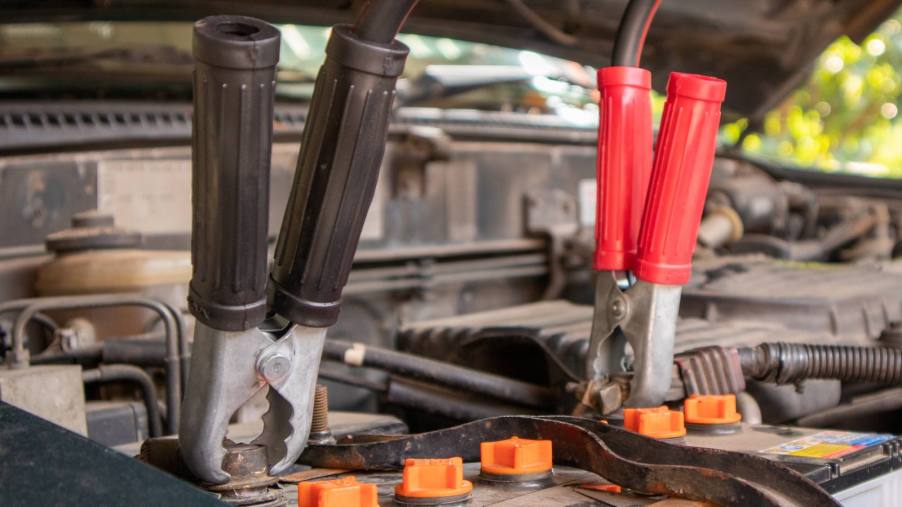
There comes a time when even the best car batteries lose their charge. Often, when this happens, the person with the dead battery looks for someone to jump-start their car. This is if they don’t have a portable way to jump-start their car. However, some may wonder if the process causes damage. Additionally, not all drivers know how to use jumper cables.
Does jump-starting car batteries cause damage?
Naturally, not all drivers know how to use jumper cables. However, it’s an easy enough process, and it allows people to help others in their time of need. Still, it’s normal to wonder if jump-starting car batteries can cause damage. According to Chapel Hill Tire, this process shouldn’t damage either vehicle involved despite causing stress for the battery and alternator. However, there are times when it could.
In particular, not following the steps for jump-starting car batteries could cause problems. This damage could happen to the battery and other critical electrical components. Sadly, this is more true for modern cars than it is for older models, as they have more moving parts than the classics do. Still, just follow the steps on how to use jumper cables, and it should be fine. Of course, some people use portable options to jump-start their car.
How to use jumper cables
Many people don’t know how to use jumper cables. However, this is an important skill to learn as you may not always have a portable option to jump-start a car. The great thing about using this method to charge car batteries is that it takes almost no time. Still, there are several essential steps you should follow closely. Doing so will ensure that neither vehicle is damaged.
People should be aware that there are several instances where jump-starting car batteries won’t work. This is usually the case if the issue is with the starter or alternator, not the battery. It could also happen if the battery is too damaged to take in or maintain a charge.
How to use jumper cables
- Park the cars where the jumper cables can reach both. Make sure both are turned off.
- Start by connecting the red clip to the positive terminal on the car that needs charging. Now connect the red clip to the doner car.
- Connect the black clip to the negative terminal on the doner car. Then connect the other black clip to the metal on the car that needs the charge. The metal should be a bolt or a bracket.
- Start the doner car and allow it to run for about two minutes.
- Start the engine of the car that needs the charge and allow it to run for about two minutes.
- Remove the jumper cables in reverse order from how you installed them. If the car runs, drive it for about half an hour to allow the alternator to charge it.
The process usually takes five to fifteen minutes to complete. However, cold weather can make it take longer. Additionally, the voltage for the two batteries should be equal.



